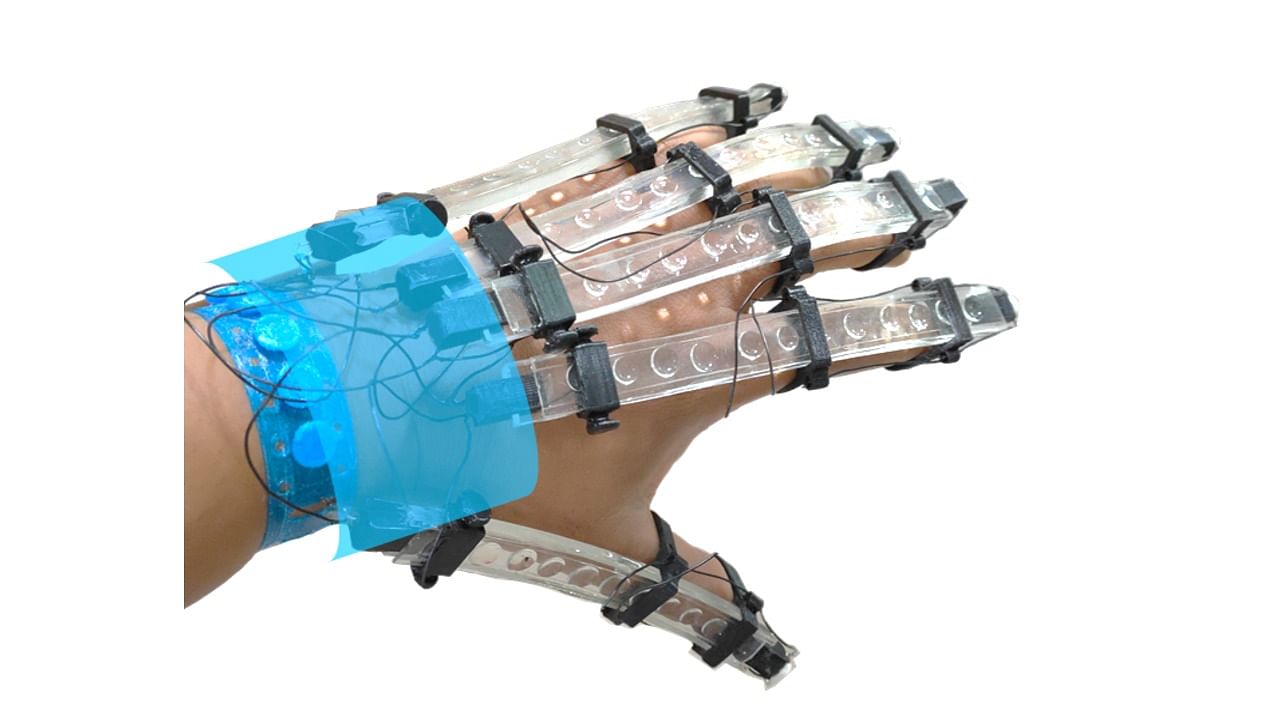
A 3D printed polymer glove that can allow an attendant of a stroke victim to conduct daily physiotherapy sessions at home for months, is the latest innovation from Indian Institute of Science, Bengaluru, which is teaming up with the Manipal group for clinical trials.
The scientists who developed the physiotherapy gloves said similar wearable devices could be made for any limb, depending on the requirements of a paralytic patient. A physiotherapist or a family member can operate it by either wearing an identical device or using a smartphone application.
"The biggest advantage is that a physiotherapist can measure the muscle strength and how the mobility or flexibility of a finger (in case of a hand) is changing,” team leader Aveek Bid, an associate professor at the Department of Physics at IISc told DH.
Regular physiotherapy sessions for lakhs of stroke victims comes with the challenge of visiting a therapist’s chamber. Home sessions are costly and may not be affordable for a large section of the people if there is a clinical requirement of continuing with such sessions for months.
Unavailability of properly trained physiotherapists in small town or rural India is also a challenge that many Indians face.
The inexpensive 3-D printed gloves or other such wearable devices offer a viable alternative as involvement of a physiotherapist may be required only at the initial stage after which the family members can continue the sessions at home with the polymer glove or similar devices.
In areas with better internet connectivity, they can use a phone application to convey to the wearable device exactly how much pressure is needed to be given at what point and how much should be the bending in case of a finger.
In low connectivity areas, someone has to wear a similar device and move the fingers to guide the patient’s glove. The two gloves will talk to each other using bluetooth.
"We hope that such a glove may cost around Rs 1,000 a piece. But we will have to first carry out the clinical trial for which we are seeking permissions,” Bid said.
The device is highly sensitive – enough to respond to the touch of a butterfly, says team member Abhijit Chandra Roy, a physicist and one of the brains behind the project. In addition, while existing devices can only detect the bending of a finger, the new device can even measure the degree of bending at every joint of the finger, he explains.
The technology that drives the device is based on the fundamental properties of light: refraction and reflection.
Any movement in the finger or arm of the patient causes the flexible material to deform. The deformation alters the path of light, and thereby its properties. The device translates this change in light properties to a quantifiable unit and measures them to deduce the strength and flexibility of the muscles.
The researchers say the device has been tested for stability for over 10 months, and no loss of sensitivity or accuracy was found. A patent has been filed for the device.
